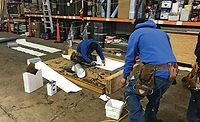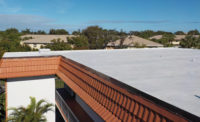The past year proved nothing short of exciting. The market continued to thrive and bustle with activity in both the new construction and retrofit sides of the business. Even with rumbling speculation about a potential slowdown ahead, the roofing industry experienced growth overall. As we enter 2019, there are, however, two key themes pervading the industry. Both are worth watching, even with the positives they bring.
Industry Consolidation Continues, Benefiting Customers
It’s no secret that numerous companies within the roofing and building products sectors have been consolidating over the past couple of years. Manufacturers, distributors and even contractor companies have all been a part of the trend. In fact, this consolidation activity also spans the construction industry at large. We’ve even seen a spike in the number of production builders being acquired over the past couple of years.
Attributed, at least in part, to the naturally maturing real estate cycle, this M&A activity has caused a lot of speculation. Questions about the effects that these mergers can, and will, have on the industry, as well as customers, the workforce and even the ultimate success of various construction projects persist. But it’s our belief that many of these consolidated companies are actually bringing greater strength and sophistication to the marketplace. For example, some of these mergers will expand and refine product lines, will catalyze product innovations and will give combined companies greater reach. Additionally, it’s likely that these combined entities will be better positioned to deliver a better overall customer experience. Other obvious benefits include improved efficiencies, more powerful sales channels and the ability to weather larger storms, including those of the economic nature.
Greater Industry Focus on Climate Change
As consumers, we hear about global climate change daily in the news. But the subject has also infiltrated our industry quite heavily. We’re starting to see how the issue of climate change is informing the development of building materials, with roofing being no exception. Attributes of products that reduce climate impacts are now heavily marketed as benefits.
Additionally, our weather patterns have obviously changed as a result of the planet warming, and we have witnessed the impacts of devastating storms. Codes are also becoming more stringent. Each of these factors has led to an increasing focus on the efficiency, durability, lifespan, weather resiliency and ROI of roofing systems, in both new construction and retrofit projects.
We’ve seen climate change affect our particular part of the roofing sector, spray polyurethane foam. Our industry has been migrating its roofing products toward fourth generation systems that leverage more sustainable blowing agents, which boast dramatically reduced global warming impacts. In this way, the spray foam industry is leading a highly important movement toward high performance solutions that directly protect against emissions, global warming and climate change. Also, in the roof coatings sector we’ve seen in recent years silicone coatings transition to a high solids formulation with minimized VOCs. This is also a key, notable improvement that can be, at least in part, tied to concerns over the climate.
While both of these trends may initially seem alarming, there is a silver lining, and that is that the roofing and construction industries are making key improvements in efficiencies, the customer experience, product development and in important Earth protections. These are things to be proud of.




Report Abusive Comment